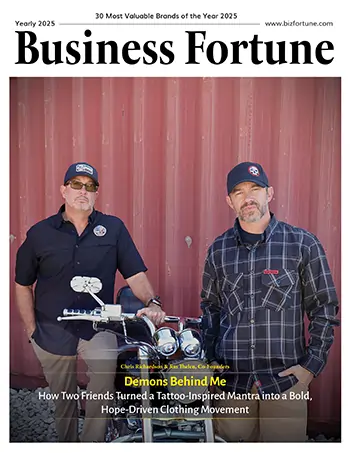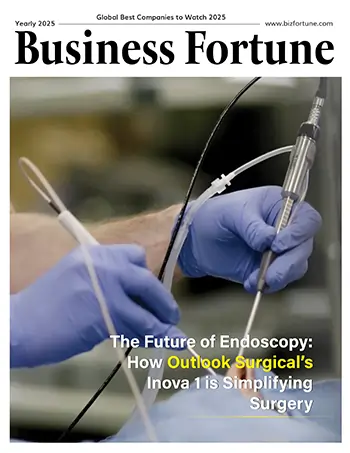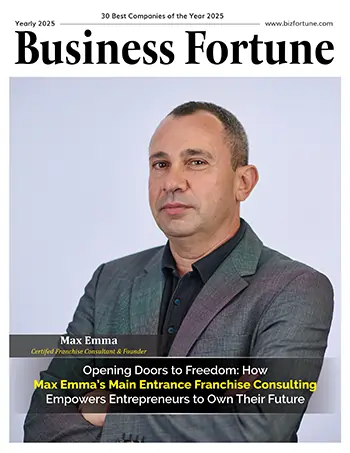30 Best Companies of the Year 2024
Business Fortune

Space exploration’s objectives are evolving. These days, spacecraft must travel farther into space and complete more tasks. But more importantly, in order to lower the cost of space trips, spacecraft must be reusable.
Because they recycle valuable resources and establish a circular space sector economy, reusable spacecraft can lower the cost of access to space and decrease environmental impact.
Saving money is by far the most evident advantage of a reusable rocket. It should come as no surprise that refurbishing and relaunching a rocket is far less expensive than building a new one—it can save up to 65% and have a 30x lower cost overrun according to industry analysts. Reusable rockets are more environmentally friendly than their disposable cousins since they consume fewer resources.
These elements, therefore, lower the cost of space launches, making the market more accessible to a wider variety of businesses. A reusable space vehicle would be a far better option for financing the launch of a satellite business, especially since launchers may provide segmented payload space.
Although numerous for-profit corporations are creating multi-use spaceships, there were very few non-profit, open-source enterprises doing the same until Space Plane Corporation emerged.

In conversation with Axel Rohde, Founder and President of Space Plane Corporation
Q. What is Space Plane Corporation’s story? Why did you decide to start a company designing reusable spacecraft?
In early 2021, we began as a small group to explore the possibility of creating a single-stage-to-orbit launch vehicle, a widely pursued goal in aerospace engineering since the 1970s. After researching the literature and evaluating different propulsion systems, we arrived at our current conceptual design.
Q. How has Space Plane Corporation grown since its founding?
In 2022, we established a non-profit corporation in Florida. Since then, we have been focused on the design and analysis of our concept vehicle and establishing our web presence. Currently, we are working on our external funding and obtaining our tax-exempt status with the goal of achieving this significant milestone by the end of the year. All our directors are part-time volunteers, so our progress has not been as fast-paced as we would wish.
Q. How is Space Plane Corporation revolutionizing space travel by making it open-source and non-profit?
Up until now, no for-profit company or government institution has successfully developed a single-stage-to-orbit, horizontal takeoff and landing vehicle. Despite nearly five decades of dedicated research efforts, this ultimate goal remains seemingly unattainable. Past efforts though have been largely uncoordinated, carried out by small groups of researchers working independently. We intend to bring together the many pieces of this puzzle and merge them into a successful design. We also think the technology, in its current state, is ready for it.
Q. What are some of the unique features of your vehicle design?
After a year of researching different engine configurations for Space Plane, we decided on a rocket-based combined cycle (RBCC). The RBCC engine has very few moving parts, which makes it lightweight, yet it covers the entire range of flight Mach numbers from take-off to orbit insertion. It is a hybrid engine, working as a ramjet, scramjet, and ducted rocket, with all three systems sharing the same flow path.
To make our vehicle single-stage-to-orbit, all the propellant has to fit inside its airframe. We came up with a rounded delta-shaped wing with sufficient thickness to fit all the tanks. The wing design looks similar to a surfboard and is well suited for riding the supersonic and hypersonic compression waves while providing ample lift at takeoff. Our current design has been run through rigorous virtual wind tunnel (CFD) testing with speeds ranging from Mach 0.3 to 25.

Q. What are the different types of services Space Plane Corporation plans to offer?
Space Plane is a revolutionary dual-purpose vehicle, capable of transporting both commercial cargo and up to ten passengers on each exhilarating journey to low Earth orbit. The climb and descent angles of lifting ascent and reentry will result in minimal g-loads (g < 2). Reclining seats continuously adjust themselves to minimize the feeling of acceleration, providing an exceptionally comfortable experience for space tourists during atmospheric flight. A typical mission lasts about 24 hours. During this time, a satellite is deployed, or supplies are delivered to a space station. Passengers can enjoy the view and experience weightlessness.
Q. What are the reasons people from academia, industry, and governments around the world choose to work with Space Plane Corporation over its rivals?
Our rivals do not disclose much of their design strategy other than showing pictures and videos of their conceptual design while providing a minimal amount of data on their vehicle specification and mission profile. We thoroughly document all our work and make it available for public viewing on our website.
We also invite feedback and collaboration from anyone who is willing to bring us closer to our goal. We believe our open source approach is more credible to sponsors who are interested in our project and who will ultimately benefit from its success. Our mission is to deliver a highly detailed, simulation tested design that a for-profit entity can then fully develop.
Q. What were some of the most memorable challenges you and the team at Space Plane Corporation have overcome? How did the company learn from these challenges?
Our directors live in the United States, Europe, and Australia. Every time we schedule a video conference for a board meeting, typically on weekends, some compromise has to be made to accommodate everyone's schedule and circadian rhythm. For that matter, we communicate mostly asynchronously, using the messenger app Telegram. Its many features allow us to collaborate as if we shared the same office space. We also share a one-terabyte cloud storage drive, allowing us to work together seamlessly with large files.
Q. What are Space Plane Corporation’s plans for the future?
The largest part of the global space economy serves data-driven applications. Satellites provide and transport data. They are indispensable for weather forecasts, global positioning, and communication.
Space tourism is still a tiny fraction of this market but will continue to grow as access to space becomes less costly. We intend to expand the space tourism market and make it safer while bringing down the cost. The dual use of our vehicle design, cargo and passengers, will make that possible.

Meet the Founder & President
Axel Rohde is the President of Space Plane Corporation and one of its five founders. In 2000, Axel Rohde received a doctorate degree (PhD) in Aerospace Engineering from the Florida Institute of Technology and thereafter attained a decade of teaching and research experience at Embry-Riddle Aeronautical University. He has taught courses in aircraft design, aircraft engine design, spacecraft dynamics and control, and various basic engineering sciences.
Dr. Rohde, using his expertise in computational fluid dynamics, founded MicroCFD in 2001. Since then he has developed a comprehensive suite of virtual wind tunnel software. This innovative technology is currently being utilized for the aerodynamic analysis of Space Plane.






















